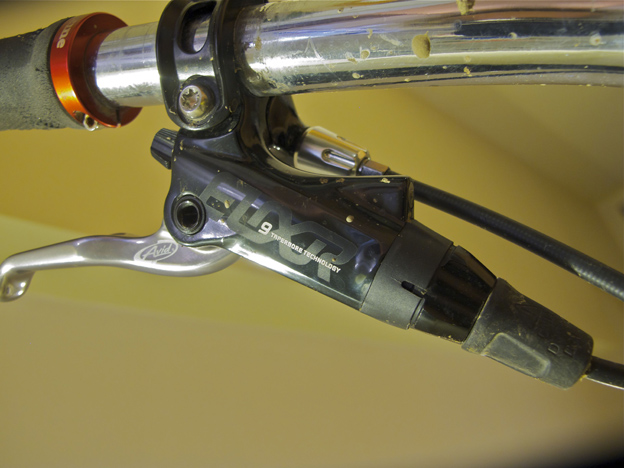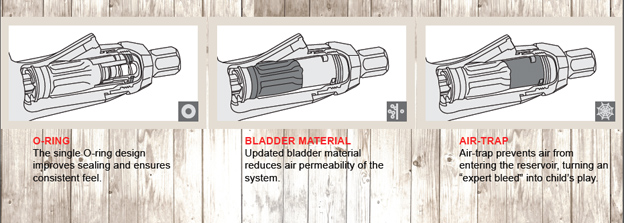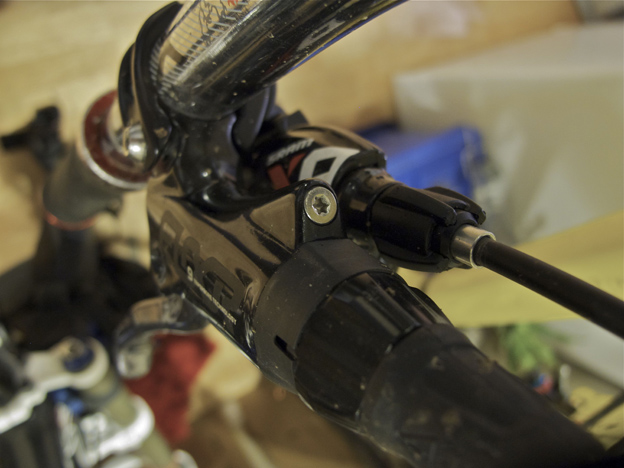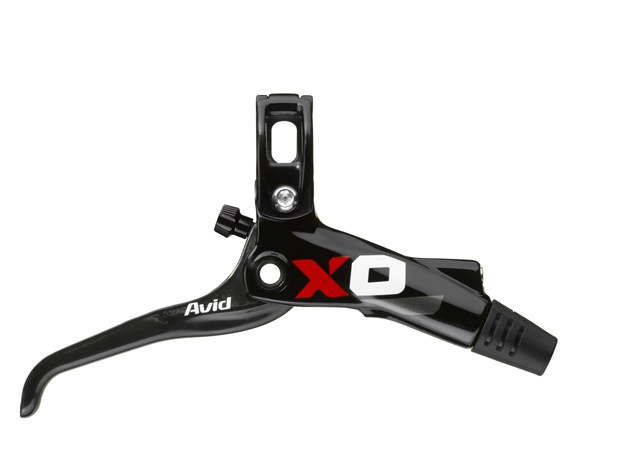
Avid Taperbore
Before we inundate you with more new product from Sram’s launch, let’s take a moment to look more closely at product that is not necessarily brand new but which might help explain the foundations and development of all new product. While at the SRAM Trail House gathering in February I had an opportunity to sit down with Braden Snead, design engineer for Avid and talk about some of the internal changes and developments that were implemented in Avid products last year and yet I feel were overlooked.

Simpler, tidier, neater.
For 2012 Avid have rolled out a new logo and branding which looks more bold, powerful and consolidated. Although this seems like just cosmetic change it could also be said to represent subtle tweaks and adjustments to the product.
Throughout 2011 the rotor pattern was established, sizes were added to the rotor line, and adaptors were adjusted. More so, the introduction of the E7 and E9 brake lever and refined Taperbore technology brought substantial gains in performance, reliability and consistency.

I’m a big personal fan of Avid brakes. I love the ergonomics, I love the modulation that they offer and I find them a doddle to bleed. However, nothing is perfect and there were always a few smaller issues with the brakes that I had chosen to overlook simply because the above factors had won me over. Often the brakes required more regular bleeding (and often came needing a good bleed from the factory) and would get a bit fluffy after some use. The powerful block bite of new brakes would sometimes soon evaporate into a spongy feeling at the lever.
Avid engineers were familiar with these issues and so when they went about redesigning the brake lever which now appears across many of the SRAM groupsets and Avid configurations they chose to tackle these problems head on.
Braden Snead explained that there were three avenues that engineers used to address some of the consistency issues they had on earlier product. That being:
- Looking for ways to reduce the tendency for air to work into the system by reducing the number of seals;
- Improving the material of the bladder so it was less permeable to air, and assuming some air does get into the system;
- How they could mitigate the impact of the air on the performance of the brake. They did this through the addition of what Avid call the Air-Trap and which turns professional bleeds into child’s play.

With earlier Taperbore brakes, changes in the orientation of the lever – lifting your bike onto the hook on the chairlift at the Bike Park for instance – led to a reduced performance of the brake. The new system allows for greater orientation of the lever while making sure any air that does get into the system can not work its way into, what engineers refer to as, the high pressure area – anything past the reservoir and towards the caliper. The reason for this is that if you get air in the system then air compresses faster or easier than oil in system so you get reduced performance.
Bleeding is perhaps the biggest contributor to the problem. One solution Avid engineers worked on has been to move the position of the bleed port upwards. The natural tendency is for air bubbles to work their way up to the highest point because of their buoyancy, then the cycling of the brake pushes the air bubble into system. Now the bleed point is at highest point so if anything does get in then it is much easier to extract the air bubbles now while bleeding.

Poor bleeds were a problem. The other thing is that after bleeding, when the pistons retracted and then pushed in under use, they would advance, and – because it is an open system – the pads would compensate and fluid from the lever would move into the caliper to take up space. Now Avid have a new bladder in the brake which can expand and contract, with heat fluctuation and with pad wear, so it compensates for the open system.
As the pad wears down the bladder expands. The bladder wants to stay in normal relaxed position so it causes a very slight vacuum pressure which, what Avid engineers found, over time lead to air permeating through the rubber wall. Avid have got a new material for the bladder now.

“All systems are prone to this so what we have done with this brake is found a different bladder material that has a much lower permeability rate which reduces the potential or speed for which air will permeate in over time.” says Braden Snead, design engineer at Avid.
Have the new bleed port and updates to the Taperbore system restored your faith in Avid’s ease of serviceability?







Comments
Please log in to leave a comment.